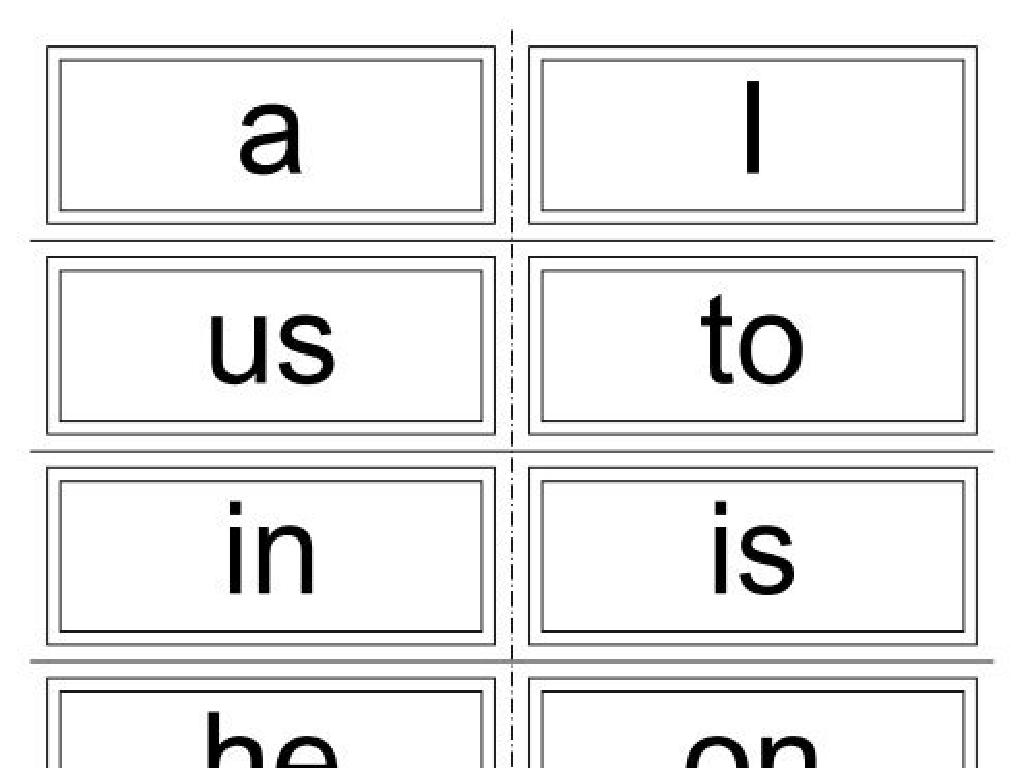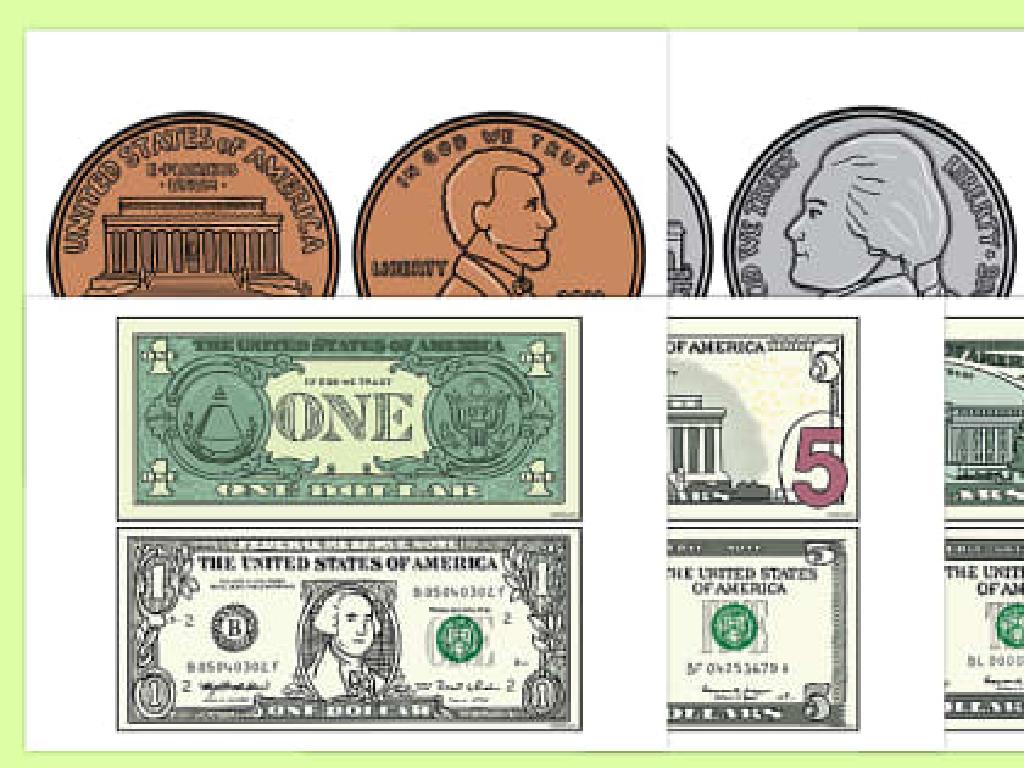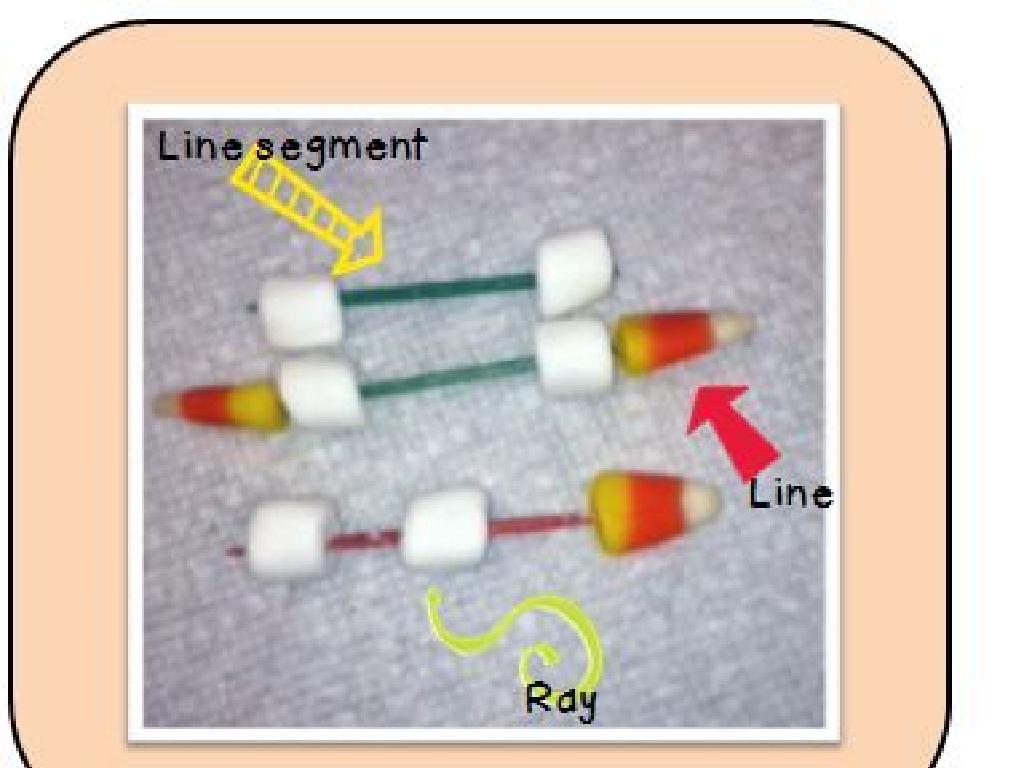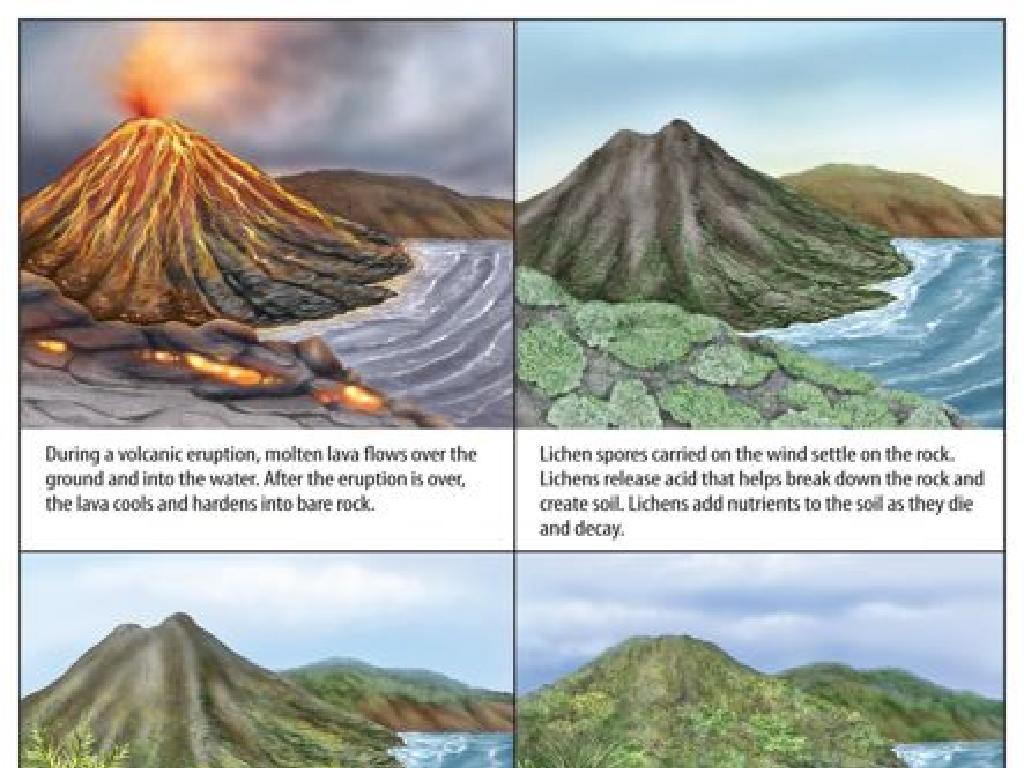Convert Between Percents, Fractions, And Decimals: Word Problems
Subject: Math
Grade: Sixth grade
Topic: Percents
Please LOG IN to download the presentation. Access is available to registered users only.
View More Content
Welcome to Percents!
– Relationship of %, fractions, decimals
– Percent means ‘per hundred’, like 50% is 50 per 100 or 1/2
– Converting % to fractions and decimals
– To convert, divide the percent by 100, e.g., 75% = 75/100 = 0.75
– Converting fractions, decimals to %
– Multiply by 100 to find percent, e.g., 0.2 = 20/100 = 20%
– Real-life applications of percents
– Percents are used in discounts, statistics, and more
|
This slide introduces students to the concept of percents and their connection to fractions and decimals, which is crucial for understanding various mathematical and real-life applications. Begin by explaining that ‘percent’ means ‘per hundred’ and show how a percent can be represented as a fraction with a denominator of 100, and then as a decimal. Provide examples of converting between these forms. Emphasize the practicality of percents in everyday life, such as calculating discounts during shopping, understanding statistics in the news, or determining interest rates on savings. Encourage students to think of additional examples where they encounter percents daily.
Understanding Percents
– Percent means ‘per hundred’
– Visualizing 1% on a 100-square grid
– Imagine a grid with 100 squares, color in just one to show 1%
– Percents in daily life
– Discounts, nutrition labels, and test scores often use percents
– Converting percents to fractions and decimals
– To convert, remember that 50% is the same as 1/2 or 0.5
|
This slide introduces the concept of percent to the students, explaining that the term ‘percent’ comes from the Latin ‘per centum,’ which means ‘per hundred.’ Show them how to visualize percentages using a grid of 100 squares, which can help them understand that each square represents 1%. Provide relatable examples such as discounts during shopping, nutritional content on food labels, and grades on tests to illustrate the use of percents in everyday life. Finally, guide them through the process of converting percents to fractions and decimals, using common percentages like 50% to demonstrate the concept. Encourage students to practice with different percentages to solidify their understanding.
Converting Fractions to Percents
– Understand fraction to percent
– Multiply by 100 to convert
– To find the percent, multiply the fraction by 100
– Example: Convert 1/2 to percent
– 1/2 * 100 = 50%, so 1/2 is equal to 50 percent
– Practice with different fractions
– Try converting 3/4, 2/5, or 5/8 to practice
|
This slide is aimed at teaching students the method of converting fractions into percents. Start by explaining that a percent represents a number out of 100. To convert a fraction to a percent, students should multiply the fraction by 100. Use the example of 1/2: when you multiply 1/2 by 100, you get 50, which means 1/2 is equivalent to 50%. Encourage students to practice this method with different fractions to gain confidence. Provide additional examples and have students explain the process to ensure understanding.
Converting Decimals to Percents
– Understand decimal to percent
– Multiply by 100 to convert
– Move the decimal point two places to the right
– Example: 0.75 becomes 75%
– 0.75 * 100 = 75%
– Practice with different decimals
– Try converting 0.25, 0.5, and 0.8
|
This slide aims to teach students the simple process of converting decimals to percents. The key concept is that ‘percent’ means ‘per hundred,’ so to convert a decimal to a percent, students multiply the decimal by 100. This is equivalent to moving the decimal point two places to the right. For example, 0.75 multiplied by 100 equals 75%. Encourage students to practice with a variety of decimals to become comfortable with the process. Provide additional examples and have students explain the steps they took to convert the decimals to ensure comprehension.
Converting Percents to Fractions and Decimals
– Percent to fraction conversion
– To convert a percent to a fraction, place the percent number over 100 and simplify.
– Percent to decimal conversion
– To change a percent to a decimal, divide by 100 or move the decimal point two places to the left.
– Example: Convert 25% to fraction
– 25% as a fraction is 25/100, which simplifies to 1/4.
– Example: Convert 25% to decimal
– 25% as a decimal is 0.25, moving the decimal two places left.
|
This slide introduces the concept of converting percents into fractions and decimals, which is a fundamental skill in understanding and working with percentages. Start by explaining that ‘percent’ means ‘per hundred,’ which is why converting to a fraction involves placing the percent number over 100. Simplifying the fraction is an important step to show the most reduced form. For decimals, guide students to understand that since percent is per hundred, dividing by 100 or equivalently moving the decimal point two places to the left achieves the conversion. Use 25% as a clear example because it is a common percentage that simplifies neatly in both forms. Encourage students to practice with other percentages to solidify their understanding.
Converting Between Percents, Fractions, and Decimals
– Comprehend the word problem
– Read carefully to understand what’s being asked.
– Determine the required form
– Is the answer needed in percent, fraction, or decimal form?
– Solve a sample problem
– Example: Convert 75% to a fraction and decimal.
– Discuss the solution steps
– We’ll go through the conversion process step by step.
|
This slide is aimed at helping students tackle word problems involving the conversion between percents, fractions, and decimals. Start by reading the problem thoroughly to understand the context and what is being asked. Next, identify whether the final answer should be presented as a percent, a fraction, or a decimal. Work through a sample problem as a class, such as converting 75% to both a fraction and a decimal, to demonstrate the process. Encourage students to ask questions and discuss each step to ensure they grasp the concept. Provide additional practice problems for students to try on their own, reinforcing the skill.
Converting Percents, Fractions, and Decimals
– Solve conversion problems
– Convert between percents, fractions, and decimals in various problems
– Work on individual practice
– Discuss solutions with a partner
– Explain your methods and reasoning to your partner
– Share findings with the class
– Be prepared to present how you solved the problems
|
This slide is designed for a class activity focused on applying knowledge of converting between percents, fractions, and decimals through word problems. Students should first attempt to solve the problems individually to assess their understanding. Afterward, they should pair up to discuss their solutions and methods. This peer interaction encourages collaborative learning and helps students articulate their thought processes. As a teacher, facilitate the activity by providing a diverse set of problems that vary in difficulty. Encourage students to explain their reasoning clearly to their partners. Conclude the activity with a few pairs sharing their solutions with the class, promoting a sense of community learning. Be ready to provide guidance and clarification as needed.
Class Activity: Percent Scavenger Hunt
– Find classroom items with percents
– Convert percents to fractions
– Use the formula: fraction = percent/100
– Convert percents to decimals
– Use the formula: decimal = percent/100
– Share your findings
|
This interactive activity is designed to help students apply their knowledge of converting between percents, fractions, and decimals in a fun and engaging way. Students will search the classroom for items that have percentage values on them, such as charts, graphs, or labels. Once they find an item, they should write down the percent and then convert it into both a fraction and a decimal using the formulas provided. After the scavenger hunt, students will come together to share their findings and discuss the different methods used for conversion. This will reinforce their understanding and provide an opportunity for peer learning. As a teacher, be prepared to facilitate the activity, assist students who may struggle with conversions, and ensure that every student participates in the sharing session.
Wrapping Up: Percents, Fractions, and Decimals
– Review of key concepts
– Homework: Conversion worksheet
– Apply today’s lesson to solve problems
– Practice with word problems
– Word problems help understand real-world application
– Share any questions next class
|
As we conclude today’s lesson on converting between percents, fractions, and decimals, it’s important to recap the main points and ensure students feel comfortable with the material. For homework, students are assigned a worksheet that includes a variety of problems to reinforce their understanding and provide practice. Encourage students to attempt the word problems as they simulate real-life scenarios where these conversions are useful. Remind them to bring any questions they have to the next class for clarification. This will help solidify their learning and prepare them for more complex mathematical concepts.






